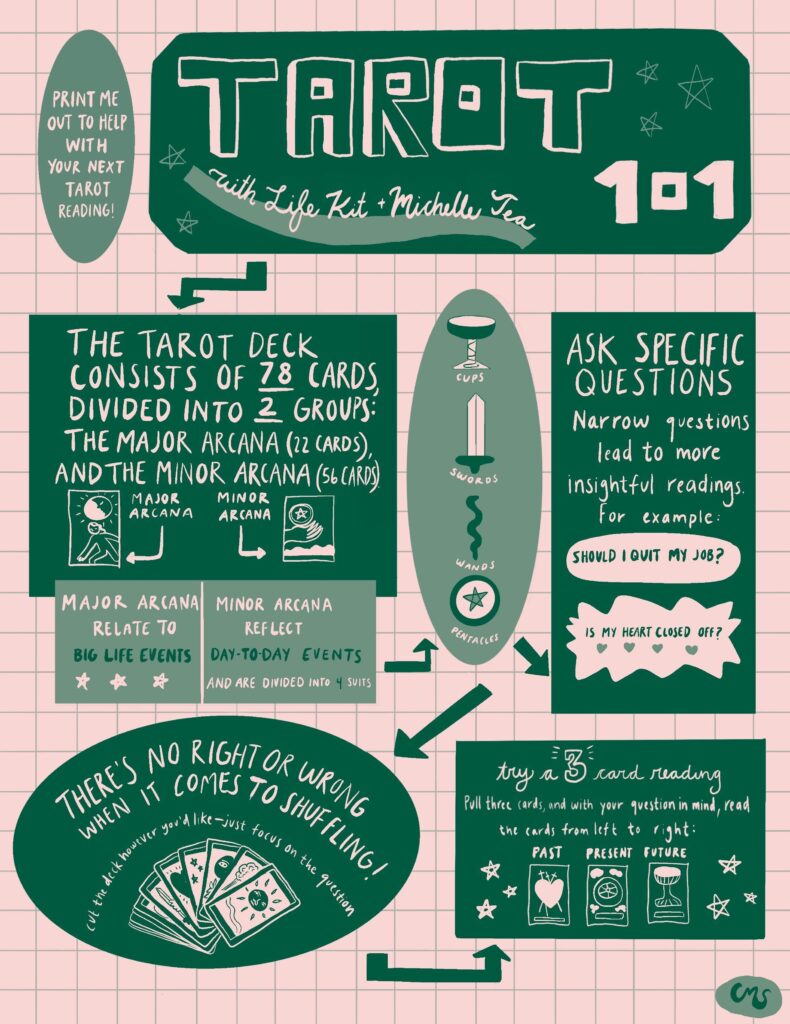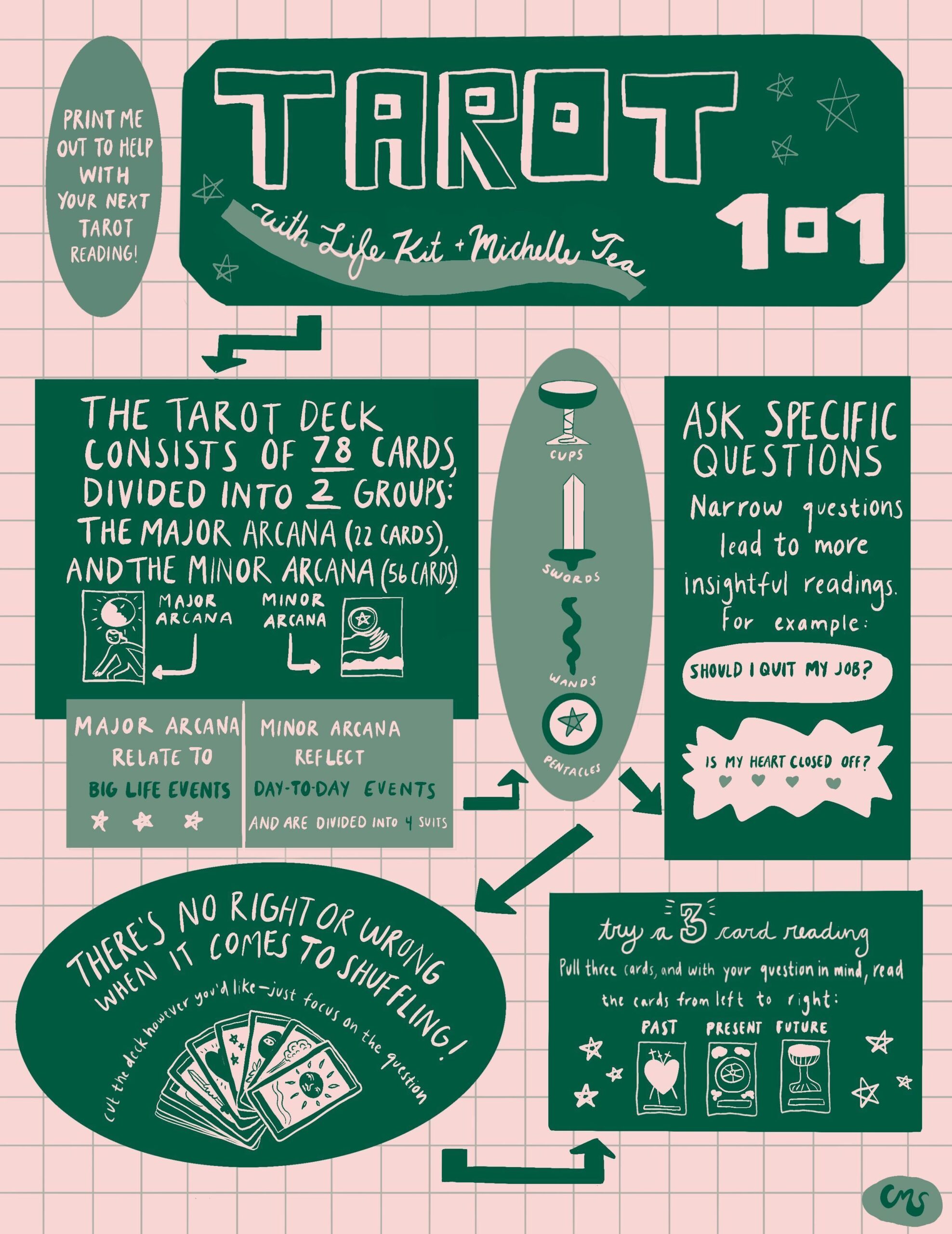Have you ever wondered if anyone can read tarot cards? Well, you’re about to find out! Tarot cards have been used for centuries to gain insight, guidance, and clarity. Many people believe that you need to possess special psychic abilities to read tarot cards effectively. However, the truth is, anyone can learn to read tarot cards with dedication, practice, and a willingness to tap into their intuition. So, if you’ve been curious about the mystique of tarot cards and thought it was only for the chosen few, think again – the art of tarot reading is open to everyone!
The Basics of Tarot Cards
Understanding Tarot Cards
Tarot cards are a powerful tool for self-reflection, personal growth, and divination. They have been used for centuries to gain insight into various aspects of life such as love, relationships, career, and spirituality. At first glance, a tarot deck may seem overwhelming with its intricate symbols and mystical imagery, but with a little guidance and practice, anyone can learn to read tarot cards.
History of Tarot Cards
The origins of tarot cards can be traced back to the 14th century in Europe. While the exact purpose of the first tarot decks is debated, it is widely believed that they were primarily used for playing card games. It wasn’t until the 18th century that tarot cards started being used for divination and spiritual purposes. Today, tarot has evolved into a popular tool for introspection and guidance, transcending cultural boundaries.
Components of a Tarot Deck
A standard tarot deck consists of 78 cards, divided into two main categories: the Major Arcana and the Minor Arcana. The Major Arcana consists of 22 cards, each representing a significant life lesson or archetype. These cards hold great power and often signify profound shifts or transformation in a person’s life. The Minor Arcana consists of four suits: Wands, Cups, Swords, and Pentacles, each with 14 cards. These cards represent more specific aspects of daily life and provide additional details and insights into a reading.
Developing Tarot Card Reading Skills
Studying Tarot Symbols
To become proficient in reading tarot cards, it is essential to familiarize yourself with the symbols and imagery present in the deck. Each card has its own unique set of symbols, colors, and patterns that carry specific meanings. Taking the time to study and understand these symbols will enhance your ability to interpret the cards and unlock the messages they hold. There are numerous books, online resources, and courses available that delve into the rich symbolism of tarot cards, providing a wealth of knowledge to explore.
Learning Card Meanings
Alongside studying the symbols, it is crucial to learn the individual meanings associated with each card. The meanings can vary depending on the deck and interpretation, so it’s essential to find resources that resonate with you. Start by familiarizing yourself with the meanings of the Major Arcana cards, as they often represent significant life events or themes. Then, move on to the Minor Arcana cards, focusing on the suits and their respective meanings. By building a strong foundation of knowledge, you will be able to interpret the cards more intuitively.
The Role of Intuition in Tarot Reading
While studying symbols and card meanings is essential, it is equally important to cultivate your intuition when reading tarot cards. Intuition is that gut feeling or inner knowing that guides your interpretations beyond what’s explicitly stated in the cards. Trusting your instincts and allowing your intuition to guide you in a reading will add depth and personal insight to your interpretations. Don’t be afraid to tap into your own inner wisdom and let your intuition shine through in your readings.
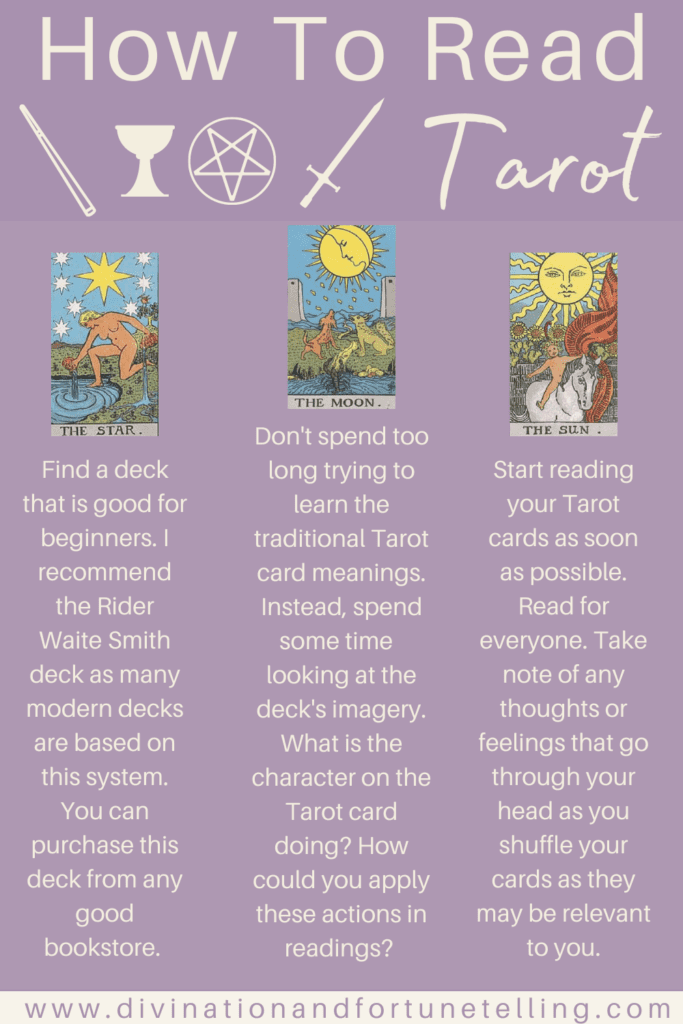
Different Tarot Card Spreads
Introduction to Tarot Spreads
Tarot spreads are a specific arrangement of cards that provide structure and framework for a reading. They determine how the cards are laid out and the positions they occupy. Each tarot spread serves a different purpose and reveals different aspects of a situation or question. By using tarot spreads, you can gain a more comprehensive understanding of the energies at play and the potential outcomes. Exploring various tarot spreads will allow you to broaden your reading skills and offer more in-depth insights.
Common Tarot Spreads
There are countless tarot spreads available, ranging from simple three-card spreads to more complex layouts like the Celtic Cross spread. Some common tarot spreads include the Past-Present-Future spread, which offers insight into the timeline of a situation, and the Relationship spread, which focuses on the dynamics between two people. The Decision-Making spread can provide guidance when faced with tough choices, while the Self-Care spread can help with personal growth and nourishment. Experimenting with different spreads will help you discover which ones resonate with you and suit your reading style.
Choosing the Right Tarot Spread
When selecting a tarot spread, consider the question or intention behind the reading. Different spreads excel at capturing specific types of information. If you’re seeking clarity on a particular situation, a focused spread with fewer cards may be more appropriate. On the other hand, if you’re exploring a complex issue or desiring a broader overview, a larger spread with more cards might be better suited. Keep in mind that the most important aspect of choosing a tarot spread is finding one that aligns with your needs and allows you to connect deeply with the cards.
Getting Started with Tarot Card Readings
Preparing Yourself and the Space
Before conducting a tarot card reading, it’s essential to create a sacred and inviting space. Begin by finding a quiet area free from distractions where you can focus on the cards and your intuition. Clear the space of any clutter and consider lighting candles or incense to enhance the ambiance. You may also choose to play soft music or use meditation techniques to center yourself before beginning the reading. By taking the time to prepare yourself and the space, you create an environment that allows for a more meaningful and intuitive tarot experience.
Building a Connection with the Cards
To establish a strong connection with the tarot cards, it is beneficial to spend time bonding with your deck. Hold the cards in your hands, shuffle them, and infuse them with your energy. Some readers choose to sleep with their cards under their pillows or carry them in a special bag throughout the day to deepen their connection. By developing a personal relationship with your tarot deck, the cards become an extension of your intuition, making the reading process more intimate and accurate.
Creating a Tarot Ritual
Adding a ritual to your tarot card reading practice can enhance the overall experience and set the intention for the session. You can create your own ritual by incorporating elements that are meaningful to you, such as meditation, visualization, or grounding exercises. Lighting a candle, saying a personal prayer or intention, or even laying out a special cloth to place the cards on can also contribute to the ritualistic aspect. Engaging in a ritual before each reading helps signal to your mind and spirit that you are entering a sacred space of insight and wisdom.
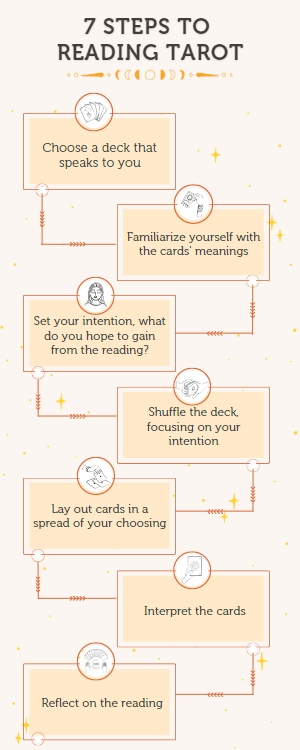
Exploring Different Tarot Reading Techniques
One-Card Readings
One-card readings are a simple yet powerful method of divination, perfect for when you need quick guidance or a daily dose of inspiration. These readings involve pulling a single card from the deck and meditating on its message and meaning. The card drawn can offer insights into the energies at play, provide guidance for the day ahead, or act as a focal point for self-reflection. One-card readings can be an excellent starting point for beginners, allowing you to develop your intuition and establish a connection with the cards.
Three-Card Readings
Three-card readings provide more depth and detail than one-card readings, making them a popular choice for exploring past, present, and future circumstances. Each card represents a different aspect of the situation being examined, offering a holistic view of the energies influencing the question at hand. The first card typically represents the past, the second card represents the present, and the third card represents the potential future outcome. Three-card spreads allow for a comprehensive analysis while still being manageable and straightforward.
Celtic Cross Spread
The Celtic Cross spread is one of the most well-known and widely used tarot spreads. It offers a comprehensive overview of a situation, providing insights into the past, present, and future, as well as the underlying influences and potential outcomes. The spread consists of ten cards laid out in a specific cross-like formation. Each position in the spread represents a different aspect of the querent’s life or circumstance, allowing for a detailed and nuanced reading. The Celtic Cross spread requires practice and familiarity, but it can yield profound and illuminating results.
Improving Your Tarot Reading Skills
Practice, Practice, Practice
Like any skill, tarot reading requires practice to become proficient. Regularly dedicating time to read for yourself and others will help you build confidence, deepen your understanding of the cards, and fine-tune your intuition. It’s essential to approach each reading session with an open mind and a willingness to learn from every experience. As you practice, you will become more comfortable with interpreting the cards, picking up on subtle nuances, and seamlessly weaving together their meanings. The more you practice, the more effortless and natural your tarot readings will become.
Keeping a Tarot Journal
Keeping a tarot journal is an excellent way to track your progress, document your readings, and reflect on your growth as a tarot reader. In your journal, record the date of the reading, the question asked, the cards drawn, and your interpretations. You can also jot down any insights or intuitive messages that come to you during the reading. Over time, you will have a collection of readings to look back on, allowing you to observe patterns, track your accuracy, and gain a deeper understanding of the cards’ symbolism and meanings.
Seeking Feedback and Guidance
Don’t shy away from seeking feedback and guidance from experienced tarot readers or mentors. Joining tarot communities, attending workshops or classes, or even finding a tarot study group can provide invaluable opportunities to learn from others. Listening to different perspectives, receiving constructive criticism, and sharing experiences with fellow enthusiasts will expand your knowledge and bring fresh insights to your readings. A supportive community can inspire and motivate you as you continue to develop your tarot reading skills.
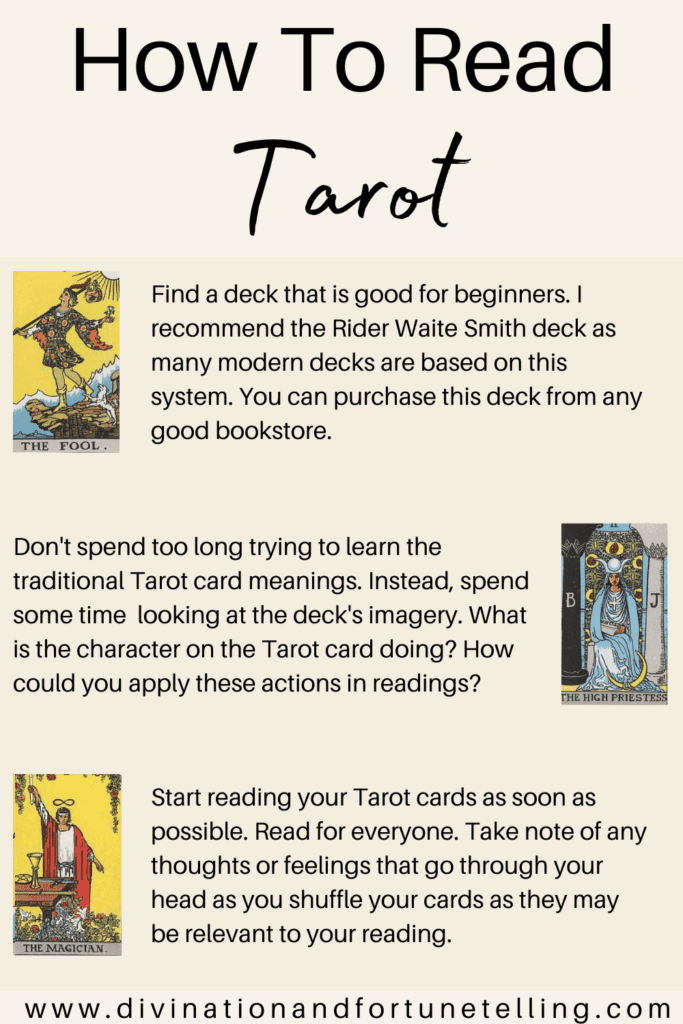
Ethics and Responsibilities of Tarot Card Readers
Ensuring Client Consent and Confidentiality
As a tarot card reader, it is essential to obtain consent from your clients before conducting a reading. Make sure they are aware of the purpose of the reading, the potential outcomes, and any potential limitations. Respect their privacy and maintain strict confidentiality regarding the information shared during the session. Establishing a safe and trusting environment allows clients to open up and receive guidance without fear of judgment or compromise.
Maintaining Professional Boundaries
Maintaining professional boundaries is crucial in tarot card readings. As a reader, it is essential to remember that your role is to facilitate insight, guidance, and empowerment rather than impose personal beliefs or judgments. Avoid offering unsolicited advice or making decisions on behalf of the client. Instead, empower them to make their own choices based on the information and insights provided during the reading. By respecting boundaries, you create a space that honors the autonomy and agency of your clients.
Providing Ethical Guidance and Advice
Ethics play a significant role in tarot card readings. Ensuring that you provide ethical guidance and advice is essential in maintaining the integrity of your practice. It is crucial to be honest and transparent with your clients, discussing both the positive and challenging aspects revealed by the cards. Avoid making sweeping predictions or definitive statements about the future, as free will and personal choices can influence outcomes. Encourage clients to view the cards as tools for self-reflection and decision-making rather than absolute predictors of events.
Common Misconceptions about Tarot Cards
Tarot Reading as Fortune-Telling
One common misconception about tarot cards is that they are used for fortune-telling or predicting the future with absolute certainty. However, tarot is not a crystal ball that provides definitive answers. Instead, it offers insights, guidance, and potential outcomes based on the energies and influences presented in the reading. Tarot empowers individuals to make informed choices and take responsibility for their own lives, recognizing that they have the ability to shape their future through their actions and intentions.
The Myth of a ‘Gifted’ Reader
Another prevalent misconception is that tarot readers possess some inherent supernatural gift or psychic ability. While some readers may have highly developed intuition, tarot reading is a skill that anyone can learn through practice and dedication. It is not about having special powers but rather about connecting with the cards, interpreting their messages, and tapping into one’s own intuition. With time, patience, and a genuine passion for the craft, anyone can become a skilled and insightful tarot reader.
Superstitions and Beliefs
There are numerous superstitions surrounding tarot cards, such as the belief that owning a tarot deck invites negative energy or that certain cards bring bad luck. However, these superstitions are unfounded and do not reflect the true nature of tarot readings. Tarot cards are simply tools that allow for self-reflection, guidance, and insight. They hold no inherent power but rather serve as catalysts for intuition and introspection. It is important to approach tarot with an open mind, free from preconceived notions or superstitious beliefs.
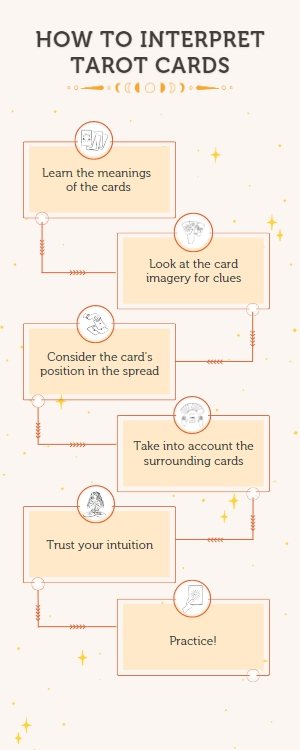
Overcoming Challenges in Tarot Card Reading
Dealing with Doubt and Skepticism
As a tarot card reader, you may encounter doubt and skepticism from both yourself and others. It is important to acknowledge and address these challenges by reminding yourself of the value and accuracy of your readings. Remember that tarot is a tool for self-reflection and personal growth, and the insights you provide can empower and guide others on their journey. Educating yourself on the history, symbolism, and interpretation of tarot cards can also boost your confidence and help you address any doubts or skepticism that may arise.
Navigating Difficult or Sensitive Readings
Tarot readings can touch on sensitive or challenging topics for clients, such as relationships, health, or career decisions. As a reader, it is crucial to approach these readings with empathy, compassion, and sensitivity. Create a safe space that encourages clients to open up and share their concerns, while also respecting their emotional boundaries. Practice active listening, offer validation and support, and provide guidance based on the cards’ messages. Navigating difficult readings requires both intuition and emotional intelligence, and with practice, you will become more adept at offering comfort and insight in these situations.
Balancing Intuition and Interpretation
Finding the balance between intuition and interpretation is a common challenge faced by tarot card readers. While it is important to rely on your intuition when conducting readings, it is equally important to apply your knowledge of tarot symbolism and meanings. Striking this balance allows you to provide accurate and insightful readings that resonate with the querent. Trust your gut instincts while also drawing on your understanding of the cards to provide well-rounded and meaningful interpretations. Over time, you will develop a unique reading style that blends intuition and interpretation seamlessly.
Final Thoughts on Reading Tarot Cards
Tarot as a Tool for Self-Reflection
Tarot cards offer a profound opportunity for self-reflection, self-awareness, and personal growth. They provide a mirror into our own subconscious, bringing to light aspects of ourselves that may be hidden or unconscious. Through tarot readings, we can explore our desires, fears, strengths, and weaknesses, gaining valuable insights into our lives and relationships. Tarot offers a space for introspection and self-discovery, enabling us to make conscious choices and align with our truest selves.
Empowerment and Personal Growth
One of the greatest gifts of tarot is the empowerment it brings to individuals. Tarot readings help us recognize the agency we possess in shaping our lives and making choices that align with our highest good. The insights and guidance provided through a tarot reading can inspire personal growth, aiding us in overcoming obstacles, identifying opportunities, and tapping into our innate potential. By embracing the wisdom and messages of the cards, we can cultivate a sense of empowerment that extends far beyond the reading itself.
Embracing Diversity in Tarot
Tarot cards are highly versatile and inclusive, embodying a wide range of cultures, beliefs, and perspectives. In recent years, there has been a growing movement to diversify and expand the representation within tarot decks. This includes incorporating more diverse cultural symbols, embracing different spiritual traditions, and challenging traditional gender roles. Embracing diversity in tarot allows for a more inclusive and representative practice, honoring the multitude of human experiences and creating a space that resonates with individuals from all walks of life.
In conclusion, tarot cards are not only a means of divination but also a powerful tool for personal introspection, growth, and empowerment. By understanding the basics of tarot cards, developing reading skills, exploring different spreads, and practicing ethically, anyone can engage in meaningful and insightful tarot card readings. Tarot offers a unique opportunity to tap into our intuition, connect with our inner wisdom, and gain a holistic understanding of ourselves and the world around us. So, grab a deck, dive into the captivating world of tarot, and embark on a transformative journey of self-discovery.
